Wearing hiking boots and offering pandemic-safe fist bumps to rescue workers, the veteran leader walked through the village of Schuld in Rhineland-Palatinate state, one of the two hardest-hit regions in western Germany.
Merkel, who is retiring from politics after September’s elections, listened to the accounts of residents where the swollen Ahr river swept away houses and left debris piled high in the streets.
Merkel was accompanied by Malu Dreyer, premier of Rhineland-Palatinate which has recorded 112 fatalities. As they navigated damaged roads together, the Chancellor gripped the hand of Dreyer, who has multiple sclerosis, to support her.
At least 160 people have died since Wednesday in Germany’s worst flooding in living memory, police said.
#Merkel in the flooded areas, giving the SPD state premier, Malu Dreyer (who has MS), support. Those are the gestures of a Chancellor. pic.twitter.com/63bEjfjjcS
— Christian Odendahl (@COdendahl) July 18, 2021
“It is a surreal, eerie situation,” a visibly shaken Merkel told reporters, as she pledged quick aid to rebuild.
“It is shocking – I can almost say that the German language doesn’t have words for the destruction that’s been wreaked.”
She added that the world “must hurry” in the battle against global warming, as many experts have attributed the recent heavy rains to climate change.
“We have to be faster in the fight against climate change,” she told reporters.
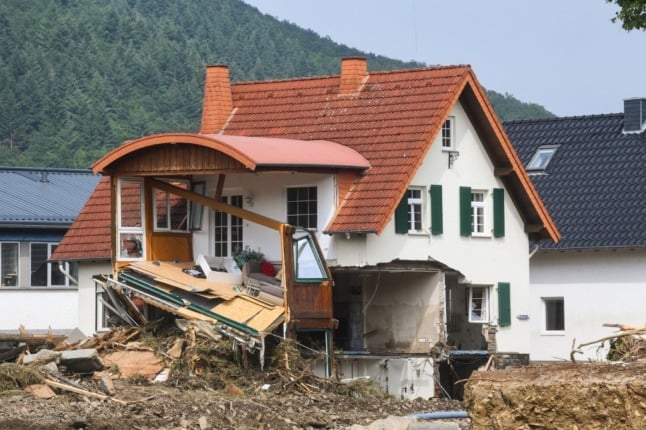
At least 27 people have lost their lives in neighbouring Belgium.
Of the 2021 news images that will stick with me, Merkel in hiking boots surveying the damage in the flood-stricken village of Schuld together with state leader Malu Dreyer, who lives with MS, is very high on the list @AFP @AFPPhoto (Christof Stache) pic.twitter.com/bj4YL0d1tl
— Deborah Cole (@doberah) July 18, 2021
The high death toll brought scrutiny to Germany’s weather alert system and whether people in the risk zones were notified early enough.
The German association of cities and towns called for “significant reinforcements” to emergency preparedness and warning systems.
Economy Minister Peter Altmaier told the Bild daily that lessons had to be learned.
Did we take enough precautions to recognise these kinds of events in time?” he asked.
Rescue crews were sifting through rubble to find victims and survivors, often in dangerous conditions. Police deployed speedboats and divers to recover bodies swept away in the torrents.
As the waters began to recede in Rhineland-Palatinate and neighbouring North-Rhine Westphalia (NRW), concern shifted south to Germany’s Upper Bavaria region, where incessant rains inundated basements and led rivers and creeks late Saturday to burst their banks.
In the eastern state of Saxony, authorities reported a “significant risk situation” in several villages.
READ ALSO: Two dead as flooding hits German states of Saxony and Bavaria
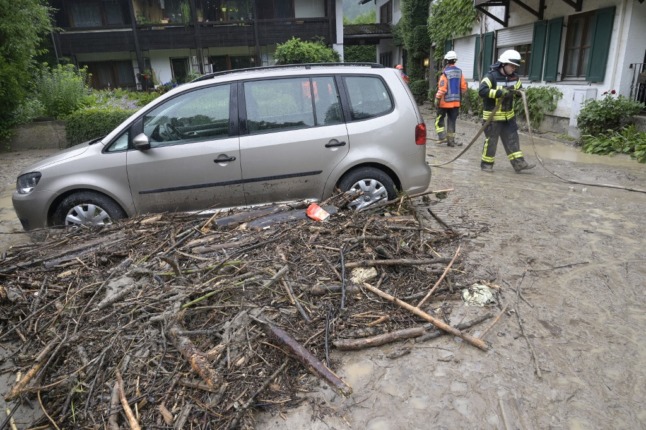
Historic heavy rainfall also battered Switzerland, Luxembourg and the Netherlands and in Austria, emergency workers in the Salzburg and Tyrol regions were on high alert for flooding. The scenic town centre of Hallein was under water.
Pope Francis expressed his “nearness” to the people of the stricken regions. “May the Lord welcome the deceased and comfort their loved ones, may he sustain the efforts of everyone who are helping those who have suffered serious damage,” he said Sunday.
‘Sorry’ for laughing
German Finance Minister Olaf Scholz pledged more than 300 million euros ($354 million) in emergency aid for people who lost homes and businesses, with the cabinet to approve a much larger reconstruction package on Wednesday.
The disaster has increasingly taken on political overtones in Germany, which heads to the polls on September 26th for a general election that will mark the end of Merkel’s 16 years in power.
With experts saying climate change is making extreme weather events more likely, candidates vying to succeed her have called for more climate action.
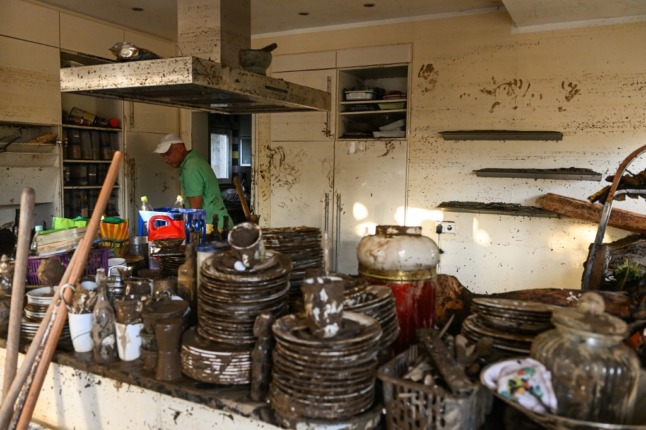
Armin Laschet, the premier of hard-hit North-Rhine Westphalia (NRW) state and frontrunner in the race, said efforts to tackle global warming should be “speeded up”.
But Laschet scored an own goal Saturday when he was filmed laughing in the devastated town of Erftstadt in NRW, where a landslide was triggered by the floods.
In the footage, Laschet could be seen chatting and joking in the background as President Frank-Walter Steinmeier gave a statement expressing his sympathies to grieving families.
“Laschet laughs while the country cries,” wrote the top-selling Bild daily. Laschet later apologised on Twitter for the “inappropriate” moment.
READ ALSO: Why have the floods in Europe been so deadly?
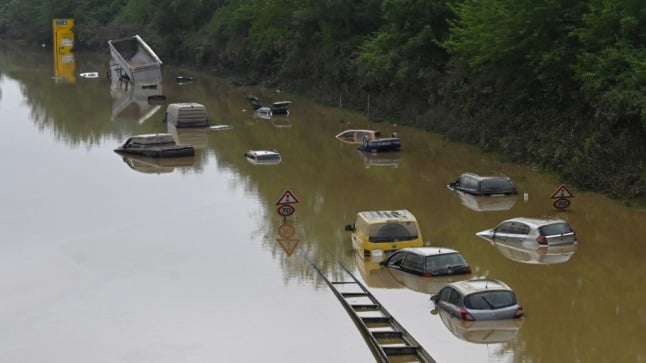
In some areas, soldiers used armoured vehicles to clear the debris clogging streets.
Local authorities in NRW and Rhineland-Palatinate said dozens of people remain unaccounted for across both states.
They have stressed, however, that disruption to communication networks made a precise assessment difficult, and the real number of missing could be lower.
“I’ve lived here my whole life, I was born here, and I’ve never seen anything like it,” said Gregor Degen, a baker in the devastated spa town of Bad Neuenahr-Ahrweiler, near Schuld.
Across the border in Belgium, the death toll jumped to 27 with many people still missing.
European Commission President Ursula von der Leyen and Prime Minister Alexander de Croo visited the flooded areas of Rochefort and Pepinster together on Saturday.
“Europe is with you,” von der Leyen tweeted afterwards. “We are with you in mourning and we will be with you in rebuilding.”

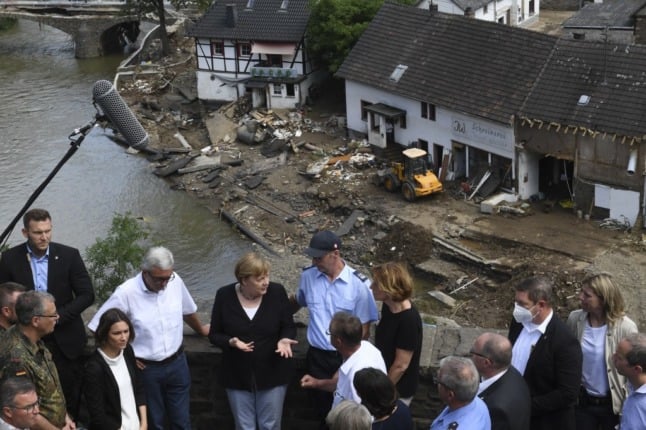
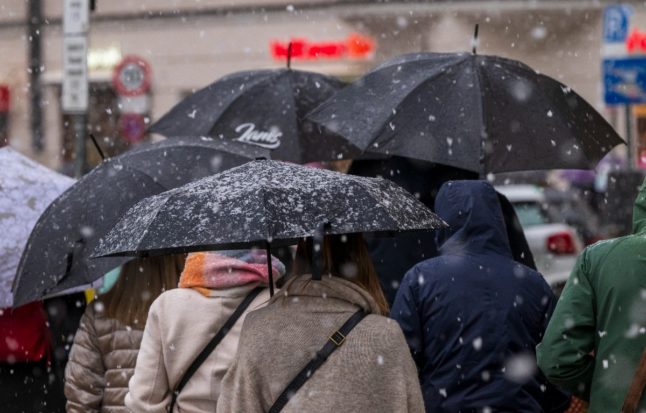
 Please whitelist us to continue reading.
Please whitelist us to continue reading.
Member comments